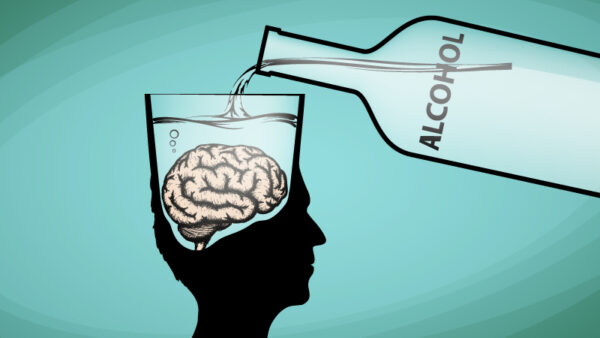Alcohol: The Positive and Negative Effects on Your Body and Mind
Alcohol plays a significant role in many social situations, and while it’s common to enjoy a drink with friends, it’s important to understand both the positive and negative effects it can have on your body, mind, and long-term health. Let’s break down the pros and cons of alcohol consumption so you can make informed choices.
The Positive Side of Alcohol
In moderation, alcohol has been associated with some potential benefits:
- Social Bonding: Alcohol often serves as a social lubricant, helping people relax and connect in social situations.
- Heart Health (in moderation): Some studies suggest that moderate consumption of certain types of alcohol, such as red wine, may have benefits for heart health due to the presence of antioxidants like resveratrol.
- Relaxation: A glass of wine or beer can help you unwind after a long day, reducing stress levels temporarily.
The Negative Side of Alcohol
While moderate drinking can have some perks, alcohol consumption also has significant downsides, especially when consumed regularly or in larger amounts.
- Cellular Damage: Alcohol is toxic to cells, particularly those in the liver. Chronic drinking can lead to liver damage, cirrhosis, and other serious conditions.
- Premature Aging: Alcohol dehydrates your body and depletes essential nutrients, which can accelerate aging, particularly in your skin. This leads to wrinkles, dullness, and other signs of premature aging.
- Cognitive Impairment: Alcohol affects brain cells and neurotransmitters, leading to slower reaction times, memory problems, and difficulty concentrating.
- Addiction Potential: Even casual drinking can develop into dependency over time, and alcohol addiction can have a profound negative impact on every aspect of life.
Alcohol may offer short-term benefits in social and emotional contexts, but the long-term consequences on your health and well-being are far more significant. Understanding the full impact of alcohol can help you make better choices for your body and mind.
Ready to take your health to the next level? With Optimized Humans, you can access personalized workout and nutrition plans, support for your wellness goals, and a community to keep you motivated. Sign up today and receive a special discount on your membership by mentioning this blog! Start your Sober October challenge with us, and take the first step towards a fitter, healthier, and more optimized you.
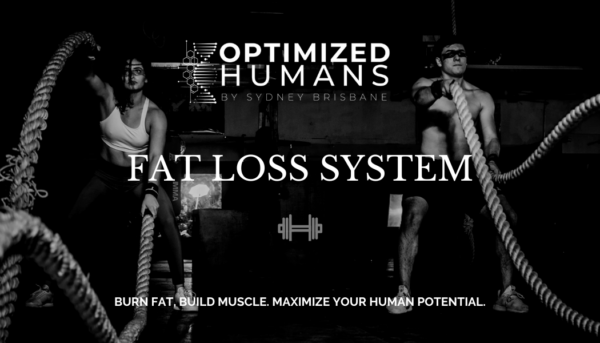

Navigating the world of macronutrients—protein, carbohydrates, and fats—can be confusing, especially when you’re trying to set them up for a great meal plan, not diet (as we discussed in the previous blog). Traditional macro ratios, which divide your daily caloric intake into specific percentages, have been a staple in meal planning. However, the Protein-First Method offers a simpler alternative that’s gaining popularity among nutrition coaches. Let’s explore this method and how it compares to traditional macro percentages.
The Traditional Macro Ratios
The classic method involves setting specific percentages of your daily caloric intake for each macro:
- Protein: 10-35%
- Carbohydrates: 45-65%
- Fats: 20-35%
This ensures balanced nutrition but can be complex to calculate and stick to, leading to frustration and confusion.
The Protein-First Method
The Protein-First Method simplifies the process by focusing on protein intake first, then distributing the remaining calories between carbs and fats based on personal preference. Here’s how you can implement it in three easy steps:
Step 1: Set Protein Grams Using a Body Weight Formula
Protein is crucial for fat loss, muscle retention, and satiety. To set your protein intake, use the formula of 1 gram of protein per pound of body weight or goal body weight if you’re overweight. For instance, if you weigh 195 pounds but want to weigh 145 pounds, aim for 145 grams of protein.
Step 2: Set Fat Grams Using an Accepted Percentage Range
Next, determine your fat intake using 15-30% of your total daily calories. For example, if your target is 1700 calories per day, 25% of that would be 425 calories from fat. Since fat has 9 calories per gram, this translates to 47 grams of fat per day.
Step 3: Calculate Carbs Based on Remaining Calories
After setting protein and fat, the remaining calories will come from carbohydrates. Subtract the calories from protein and fat from your total daily calorie target to find your carbohydrate allowance. For instance, if you have 1005 calories from protein and fat and a total of 1700 calories, you’ll have 695 calories left for carbs. Since carbs have 4 calories per gram, this means 174 grams of carbs per day.
Comparing the Two Approaches
Ease of Use:
- Traditional Ratios: Requires precise calculations and adherence to specific percentages.
- Protein-First: Simplifies the process by focusing on one primary macro, making it easier to follow.
Flexibility:
- Traditional Ratios: Offers structured guidelines but can be less adaptable to individual preferences.
- Protein-First: Provides a customizable framework that can be tailored to personal tastes and lifestyle.
Nutritional Balance:
- Traditional Ratios: Ensures a balanced intake of all macros, supporting overall health.
- Protein-First: Emphasizes protein but requires mindful distribution of remaining calories to avoid imbalances.
Final Thoughts
Both the traditional macro ratios and the Protein-First Method have their merits. The key is to find an approach that aligns with your lifestyle and goals. If you’re looking for a straightforward, customizable way to manage your diet, the Protein-First Method might be the game-changer you need. By ensuring you get your protein and calorie intake right, you’ll be well on your way to achieving your nutrition goals with less confusion and more success.
Example Calculations Female,
195 pounds, aiming for 145 pounds:
- Calories: 1700
- Protein: 145 grams (580 calories)
- Fat: 47 grams (425 calories)
- Carbs: 174 grams (695 calories)
Male, 195-pound lifter aiming to get ripped:
- Calories: 2300
- Protein: 195 grams (780 calories)
- Fat: 51 grams (460 calories)
- Carbs: 265 grams (1060 calories)
By using this method, you can set up a meal plan that fits your specific needs and preferences, simplifying the complex world of macronutrient balance.
Just For YOU!
At Optimized Humans, we are committed to providing you with the personalized support and guidance you need to succeed. As your dedicated partner, I will work with you one on one through our innovative app, leveraging cutting-edge technology and my +15 years of expertise as a certified health coach. Together, we will create a tailored fitness and health plan designed specifically to fit your unique needs and goals. Whether you’re aiming to increase strength, improve stamina, enhance flexibility, or boost mental resilience, I will be there every step of the way to support and motivate you.
Click this link for your free gift!
https://www.trainerize.me/profile/siiib/?planGUID=28a1d9e4193241a59dd3afaa62b54837
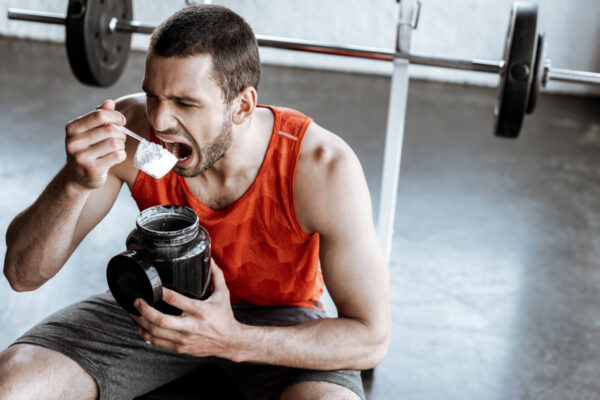
Let’s face it embarking on a “diet” (a word I hate using because of the stigma, I prefer clean or healthy meal plan/planning) journey often means paying close attention to macronutrients—proteins, fats, and carbohydrates—that fuel our bodies. Even seasoned dieters can make common mistakes when it comes to balancing these essential nutrients. Let’s dive into spoon and fork into the most frequent macro mistakes and how to avoid them.
1. Overemphasizing Protein Intake
The Mistake: While protein is crucial for muscle repair and growth, overemphasis on it can lead to neglecting other essential nutrients. Many experienced dieters fall into the trap of consuming too much protein compared to a healthy balance, believing it will lead to greater muscle gain or fat loss.
The Fix: According to the Dietary Guidelines for Americans, the recommended dietary allowance (RDA) for protein is 46 grams per day for women and 56 grams per day for men. Instead of focusing solely on protein, ensure you’re getting a balanced intake of all macronutrients. A good rule of thumb is to distribute your daily calorie intake to about 10-35% protein, 45-65% carbohydrates, and 20-35% fats.
***Personal Tip (1 gram per pound of total bodyweight, or 1 gram per pound of goal bodyweight)
2. Neglecting Carbohydrates
The Mistake: Carbohydrates often get a bad rap in diet culture. Many dieters, even experienced ones, may cut carbs drastically, thinking it will speed up weight loss. However, this can lead to energy slumps and nutrient deficiencies.
The Fix: Carbohydrates are the body’s primary energy source. The Institute of Medicine recommends that 45-65% of your daily calories come from carbohydrates. Focus on consuming complex carbohydrates such as whole grains, vegetables, and fruits, which provide sustained energy and essential nutrients.
3. Ignoring the Importance of Fats
The Mistake: In an effort to reduce calorie intake, some dieters cut out fats almost entirely. This can be detrimental, as fats are essential for hormone production, brain health, and the absorption of fat-soluble vitamins (A, D, E, and K).
The Fix: Healthy fats should comprise 20-35% of your daily calorie intake. Prioritize sources of unsaturated fats such as avocados, nuts, seeds, and olive oil. These not only provide energy but also support overall health and well-being.
4. Misjudging Portion Sizes
The Mistake: Even when focusing on macros, portion control can be a stumbling block. Overestimating portion sizes can lead to consuming more calories than intended, while underestimating can result in nutrient deficiencies.
The Fix: Use measuring tools like cups, spoons, and food scales to accurately gauge portion sizes. Familiarize yourself with visual cues for portion sizes, such as understanding that a serving of protein is roughly the size of a deck of cards.
5. Inadequate Fiber Intake
The Mistake: Fiber often gets overlooked in the quest to balance macros. However, a diet lacking in fiber can lead to digestive issues and suboptimal blood sugar control.
The Fix: The Academy of Nutrition and Dietetics recommends 25 grams of fiber per day for women and 38 grams for men. Incorporate a variety of fiber-rich foods into your diet, such as vegetables, fruits, whole grains, and legumes, to support digestive health and satiety.
6. Failing to Adjust Macros for Activity Levels
The Mistake: Experienced dieters may stick to a fixed macro ratio without considering their activity levels. This can result in inadequate energy intake on active days or excessive intake on rest days.
The Fix: Adjust your macronutrient intake based on your activity level. On more active days, increase your carbohydrate intake to fuel your workouts and aid recovery. Conversely, on rest days, consider slightly reducing your carbohydrate intake while maintaining adequate protein and fat levels.
Conclusion
Even experienced dieters can fall into common macro pitfalls. By ensuring a balanced intake of protein, carbohydrates, and fats, paying attention to portion sizes, and adjusting for activity levels, you can optimize your diet for better health and performance. Remember, a well-rounded diet is key to long-term success and overall well-being.
We Want To Hear From You!
At Optimized Humans, we are committed to providing you with the personalized support and guidance you need to succeed. As your dedicated partner, I will work with you one on one through our innovative app, leveraging cutting-edge technology and my +15 years of expertise as a certified health coach. I am genuinely passionate about helping individuals like yourself unlock their full potential and live their best lives. If you’re ready to take the next step towards a healthier, happier, and more fulfilled you, I would be honored to embark on this journey with you.
Click the link below for our special offer! https://www.trainerize.me/profile/siiib/?planGUID=28a1d9e4193241a59dd3afaa62b54837&mode=checkout
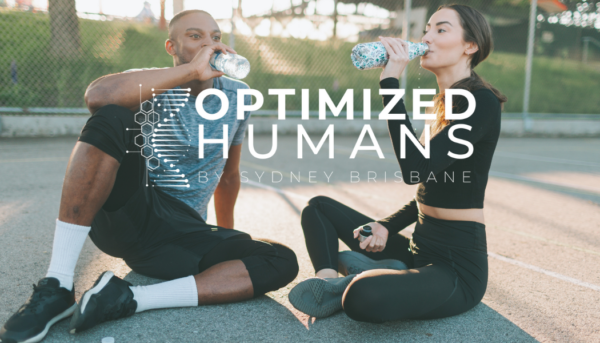
As the summer sun blazes, your workouts might feel more intense, and your body will undoubtedly work harder. Proper post-workout recovery becomes even more crucial during hot weather to ensure your body recovers efficiently and remains injury-free. The Optimized Humans program offers expert advice and resources to help you optimize your recovery. Here are the best practices for post-workout recovery in hot weather, including stretching routines and nutrition tips available in our program.
Hydration is Key
One of the most important aspects of recovery, especially in hot weather, is staying hydrated. Your body loses more fluids through sweat, so replenishing these is essential.
1. Rehydrate Immediately: Drink plenty of water immediately after your workout. Aim for at least 16-24 ounces of water within the first 30 minutes post-exercise.
2. Electrolyte Balance: Consuming drinks with electrolytes can help replenish lost salts and minerals. Consider coconut water or specially formulated electrolyte drinks.
3. Monitor Your Hydration: Check the color of your urine; a pale yellow indicates proper hydration, while darker urine suggests you need to drink more fluids.
Effective Cooling Down
Cooling down helps bring your heart rate back to normal and prevents muscle stiffness. The Optimized Humans program offers guided cool-down routines to ensure you recover properly.
1. Gradual Cool-Down: Spend at least 5-10 minutes walking or performing low-intensity movements to gradually reduce your heart rate.
2. Static Stretching: Incorporate static stretches targeting the major muscle groups you worked during your exercise. Hold each stretch for 20-30 seconds to improve flexibility and reduce muscle tension.
3. Deep Breathing: Practice deep breathing exercises to promote relaxation and aid in the recovery process. This helps lower your heart rate and can reduce post-workout stress.
Stretching Routines for Optimal Recovery
Stretching is a crucial part of the recovery process, especially after intense workouts in hot weather. The Optimized Humans app includes comprehensive stretching routines designed to enhance recovery.
1. Full-Body Stretch Routine: Focus on a full-body stretching routine that targets all major muscle groups. This can help improve flexibility, reduce muscle soreness, and prevent injuries.
2. Yoga and Mobility Work: Incorporate yoga and mobility exercises to enhance your recovery. These practices help improve joint mobility, reduce muscle stiffness, and promote relaxation.
3. Foam Rolling: Use a foam roller to release muscle tension and improve blood flow to your muscles. The app provides guided foam rolling exercises for different muscle groups.
Nutrition for Recovery
What you eat after your workout plays a significant role in your recovery. The Optimized Humans program offers personalized nutrition plans to help you refuel and repair your body.
1. Protein Intake: Consume a protein-rich snack or meal within 30-60 minutes post-workout to support muscle repair and growth. Options include protein shakes, Greek yogurt, or a turkey sandwich.
2. Carbohydrates for Energy: Pair your protein with carbohydrates to replenish glycogen stores and provide energy for recovery. Good options include fruits, whole grains, and vegetables.
3. Healthy Fats: Include healthy fats in your post-workout meal to support overall recovery and reduce inflammation. Avocados, nuts, and olive oil are excellent choices.
4. Antioxidant-Rich Foods: Consume foods rich in antioxidants to combat oxidative stress caused by intense exercise. Berries, leafy greens, and nuts are great options.
Rest and Sleep
Adequate rest and quality sleep are essential for optimal recovery. The Optimized Humans program provides tips and techniques to improve your sleep hygiene.
1. Prioritize Sleep: Aim for 7-9 hours of sleep each night to allow your body to recover fully. Sleep is when your body repairs muscles, consolidates memory, and releases growth hormones.
2. Create a Relaxing Environment: Ensure your sleep environment is cool, dark, and quiet. Consider using blackout curtains, earplugs, or a white noise machine to enhance sleep quality.
3. Consistent Sleep Schedule: Maintain a consistent sleep schedule by going to bed and waking up at the same time each day, even on weekends.
Conclusion
Recovering properly after workouts, especially in hot weather, is essential to maintain your fitness progress and overall well-being. By following these best practices for hydration, cooling down, stretching, nutrition, and rest, you can optimize your recovery and continue to perform at your best. The Optimized Humans program is here to support you with personalized recovery plans, expert advice, and comprehensive resources. Embrace these recovery techniques to stay healthy, energized, and ready for your next workout, no matter how high the temperature rises.
Exclusive Deal For You!
Unlock your potential with a complimentary 14-day trial of our #OptimizedHumans program! 🚀 Dive into customized workouts, expert guidance, and transformative resources designed to enhance your physical and mental well-being. 💪 Join hands with Sydney and our dedicated team to embark on a personalized fitness journey tailored just for you. Together, we’ll optimize your health and set you on the path to success. Plus, discover how we collaborate with companies to boost employee efficiency through tailored workout and nutrition plans. Don’t wait any longer—start your journey to optimal living today at optimizedhumans.life!

Summer is the perfect time to ramp up your fitness routine, take advantage of the beautiful weather, and work towards your health goals. Whether you’re looking to get in shape, stay active, or try new workouts, the Optimized Humans program offers the tools and guidance you need to maximize your summer fitness routine. Here’s how you can leverage the personalized workouts and features available in the Optimized Humans app to stay fit and motivated all summer long.
Personalized Workouts Tailored to Your Goals
One of the standout features of the Optimized Humans program is the ability to create personalized workout plans tailored to your individual goals. Whether you’re aiming to lose weight, build muscle, improve endurance, or simply maintain your current fitness level, the app offers a variety of workouts designed to meet your specific needs.
1. Customizable Plans: The app allows you to set your fitness goals and preferences, creating a workout plan that fits your schedule and interests. Whether you prefer strength training, cardio, HIIT, or a mix of everything, Optimized Humans has you covered.
2. Adaptive Workouts: The app adjusts your workout intensity based on your progress, ensuring you are continually challenged and making improvements. This adaptive approach helps prevent plateaus and keeps your fitness journey exciting.
3. Variety of Exercises: With a vast library of exercises and routines, you’ll never get bored. From yoga and Pilates to high-intensity interval training and weightlifting, the app offers something for everyone, catering to all fitness levels and interests.
Outdoor and Home Workouts
Summer is the ideal time to take your workouts outdoors. Optimized Humans provides a range of outdoor workout options that can be easily integrated into your fitness routine.
1. Outdoor Fitness Routines: The app features guided outdoor workouts such as running, cycling, and bodyweight exercises that can be performed in parks, beaches, or your backyard. Enjoy the fresh air and sunshine while staying active.
2. Home Workouts: If you prefer working out at home, Optimized Humans offers numerous routines that require minimal to no equipment. These workouts are perfect for days when you want to stay indoors or if you’re traveling and don’t have access to a gym.
3. Location-Based Recommendations: The app can suggest nearby parks, trails, and outdoor fitness spots, making it easier for you to find the perfect location for your workout.
Track Your Progress and Stay Motivated
Staying motivated is key to maintaining a consistent fitness routine, and Optimized Humans provides several features to help you stay on track.
1. Progress Tracking: The app allows you to track your workouts, monitor your progress, and set new goals. Visualizing your improvements can be incredibly motivating and help you stay committed to your fitness journey.
2. Personalized Feedback: Receive real-time feedback and tips from virtual trainers based on your performance. This personalized guidance ensures you’re performing exercises correctly and efficiently.
3. Community Support: Connect with other users through the app’s community features. Share your achievements, participate in challenges, and find workout buddies to keep you motivated and accountable.
Nutrition Guidance and Meal Planning
A well-rounded fitness routine includes not only exercise but also proper nutrition. Optimized Humans offers nutritional guidance and meal planning features to complement your workouts and help you achieve your health goals.
1. Personalized Meal Plans: Based on your dietary preferences and fitness goals, the app provides customized meal plans and recipes to fuel your body with the right nutrients.
2. Nutritional Tracking: Keep track of your daily food intake, monitor your macros, and ensure you’re meeting your nutritional needs. The app makes it easy to stay on top of your diet and make healthier choices.
3. Healthy Summer Recipes: Discover delicious and nutritious summer recipes that are easy to prepare and perfect for the season. From refreshing smoothies to light salads, the app offers a variety of options to keep your diet exciting and wholesome.
Conclusion
Maximizing your summer fitness routine is effortless with the Optimized Humans program. By leveraging the personalized workouts, outdoor and home fitness options, progress tracking, and nutritional guidance, you can stay fit, motivated, and healthy all summer long. Download the Optimized Humans app today and start your journey towards a more active and fulfilling summer. Embrace the season with a renewed focus on your fitness goals and let Optimized Humans be your partner in achieving them.

We are in the third week battling against Alzheimer’s and cognitive decline takes center stage. In this month dedicated to raising awareness, let’s explore how we can harness the power of mind over matter to combat these formidable adversaries. Join us as we dive into effective strategies to preserve cognitive function and champion brain health.
Navigating Alzheimer’s:
Alzheimer’s disease poses a significant challenge to individuals and communities worldwide. However, armed with knowledge and determination, we can navigate this journey with resilience. Explore treatment options such as cognitive enhancers and lifestyle interventions to manage symptoms and enhance quality of life. Additionally, participate in clinical trials to contribute to the advancement of Alzheimer’s research and potential breakthroughs.
Fueling Brain Resilience:
Just as a car needs fuel to run smoothly, our brains require nourishment to function optimally. Adopt a brain-healthy diet rich in nutrients like antioxidants, omega-3 fatty acids, and vitamins B and D. Incorporate foods such as fatty fish, leafy greens, nuts, and berries to support cognitive resilience and protect against age-related cognitive decline.
Empowering Early Detection:
Early detection is critical in the fight against Alzheimer’s and cognitive decline. Embrace the power of blood tests to identify biomarkers associated with brain health and cognitive function. Routine screenings for cholesterol, glucose, and inflammation levels can provide valuable insights and prompt proactive interventions to mitigate risk factors and promote brain resilience.
Insights from Genetic Profiling:
Genetic profiling offers personalized insights into individual susceptibility to Alzheimer’s disease and cognitive decline. By understanding genetic risk factors, individuals can implement targeted interventions to optimize brain health and reduce the likelihood of developing cognitive impairments. Explore lifestyle modifications, including regular exercise, stress management, and cognitive stimulation, to bolster brain resilience and support overall well-being.
Conclusion:
As we embark on June’s battle against Alzheimer’s and cognitive decline, let’s remember that mind over matter can be a powerful force for change. By navigating Alzheimer’s with resilience, fueling brain resilience with a nutrient-rich diet, empowering early detection through blood tests, and gaining insights from genetic profiling, we can tilt the odds in favor of cognitive vitality. Together, let’s embrace the challenge and pave the way for a future where cognitive health flourishes.
Stay tuned for our last actionable insights and tips throughout Alzheimer’s and Brain Awareness Month!
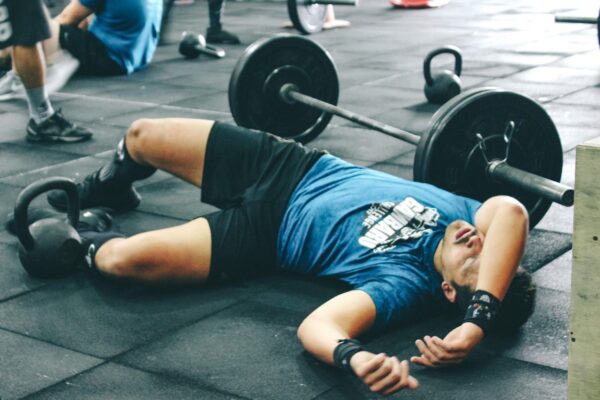
In the ever-evolving landscape of fitness, the pursuit of a healthier lifestyle has transcended the traditional realms of intense workouts. This blog delves into the transformative journey of the fitness industry, highlighting the growing importance of recovery and wellness services. Beyond the sweat-drenched workouts, a new era is emerging—one that embraces a holistic approach to well-being.
Rethinking Fitness: A Holistic Perspective
Gone are the days when fitness was synonymous with grueling workouts and sweat-soaked gym sessions. The evolving mindset of fitness enthusiasts is steering towards a holistic perspective that encompasses physical, mental, and emotional well-being. The realization that recovery is not just a post-workout necessity but a fundamental aspect of a healthy lifestyle is reshaping the fitness narrative.
The Role of Recovery in Performance Enhancement
While challenging workouts remain crucial for physical fitness, the focus is shifting towards what happens after the sweat session. Recovery is now recognized as a key element in performance enhancement. Athletes and fitness enthusiasts are exploring innovative recovery techniques to optimize their training results, reduce the risk of injuries, and promote long-term sustainability in their fitness journeys.
Personalized Recovery Plans
As the understanding of individual variability in recovery needs grows, the fitness industry is moving towards personalized recovery plans. Tailoring recovery strategies to individual preferences, body types, and fitness goals ensures a more targeted and effective approach. From customized recovery nutrition plans to specific recovery modalities, the emphasis is on providing personalized solutions for each individual.
Integration of Technology in Recovery
Technology is playing a significant role in revolutionizing the recovery aspect of fitness. Wearable devices, fitness apps, and smart recovery tools are empowering individuals to track their recovery progress, monitor vital indicators, and make informed decisions about their wellness routines. This integration of technology fosters a more data-driven and efficient approach to recovery.
Recovery Beyond Physical: Mental and Emotional Well-being
The evolution of fitness now acknowledges that well-being goes beyond physical health. Mental and emotional well-being are gaining prominence as essential components of a holistic fitness journey. Practices such as meditation, mindfulness, and stress management are becoming integral to recovery routines, promoting a balanced and resilient mindset.
Holistic Wellness Centers: A Hub for Comprehensive Well-being
The rise of holistic wellness centers signifies a shift from traditional gyms to comprehensive well-being hubs. These centers offer a spectrum of services, including recovery modalities, fitness classes, mental health resources, and nutritional guidance. They provide a one-stop destination for individuals seeking a well-rounded approach to their health and fitness.
Community and Support in Holistic Fitness
The evolving fitness landscape is fostering a sense of community and support. Whether through fitness classes, online forums, or social media groups, individuals are connecting to share their experiences, challenges, and triumphs in their holistic fitness journeys. This sense of community serves as a motivational force, encouraging individuals to prioritize their well-being in a supportive environment.
Paradigms and Transcendents
The evolution of fitness is a dynamic journey that transcends the limitations of traditional workout paradigms. Embracing recovery and wellness services as integral components of a holistic fitness approach paves the way for a more sustainable and fulfilling health journey. Beyond the sweat, fitness enthusiasts are discovering the transformative power of recovery, not just for physical performance but for fostering a balanced and thriving life. The future of fitness is one that goes beyond the gym floor, incorporating recovery and wellness as pillars of a comprehensive and holistic well-being strategy.
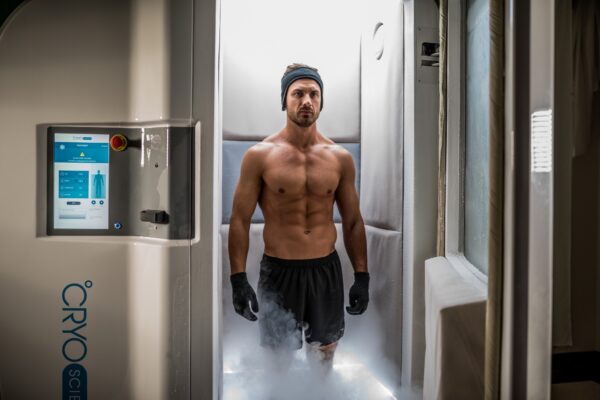
In the ever-evolving landscape of fitness, a significant shift has occurred as people increasingly recognize the profound impact of recovery and wellness on their overall well-being. This paradigm shift is not only transforming individual health practices but is also reshaping the very fabric of the fitness industry. From high-intensity workouts to recovery and rejuvenation, the holistic approach to fitness is gaining momentum, with gyms and fitness studios leading the charge.
Understanding the Importance of Recovery
Beyond the intensity of workouts, recovery has emerged as a crucial component of a well-rounded fitness routine. Recognizing the need for balance, individuals are prioritizing recovery to enhance performance, prevent injuries, and promote overall health. This awareness has sparked a revolution in the fitness industry, where recovery is not merely an afterthought but an integral part of the fitness journey.
Diversification of Fitness Services
Gone are the days when fitness centers solely focused on strenuous workouts. The current trend sees gyms and studios diversifying their offerings to include an array of recovery and wellness services. These services go beyond the conventional, embracing innovative approaches like cryotherapy, infrared saunas, and massage therapy to address both physical and mental recovery.
Cryotherapy: Chilling for Healing
Cryotherapy, the practice of exposing the body to extremely cold temperatures for short periods, has gained popularity for its potential benefits in reducing inflammation, relieving muscle soreness, and even boosting metabolism. Fitness enthusiasts are turning to cryotherapy chambers as a cutting-edge method to expedite recovery and optimize their performance.
Infrared Saunas: The Warmth of Well-Being
Infrared saunas, with their gentle heat penetrating the body, have become a favored choice for recovery. Beyond relaxation, these saunas are believed to promote detoxification, improve circulation, and alleviate muscle tension. The embrace of infrared saunas in fitness studios reflects a commitment to holistic well-being.
Massage Therapy: Healing Hands for Holistic Health
Massage therapy, a timeless practice, has found a new home in fitness centers. Beyond being a luxurious indulgence, massages are recognized for their therapeutic benefits, promoting muscle recovery, reducing stress, and enhancing flexibility. The integration of massage therapy into fitness services is a testament to the industry’s dedication to comprehensive wellness.
The Future of Fitness
As recovery and wellness services continue to weave themselves into the fabric of the fitness industry, we witness the emergence of a more comprehensive and holistic approach to health. The future of fitness lies not only in the intensity of workouts but in the thoughtful integration of recovery practices that nurture the body, mind, and spirit.
In this transformative era, where recovery is no longer a luxury but a necessity, fitness enthusiasts are not just sculpting their bodies—they’re cultivating a lifestyle of holistic well-being. The gyms and fitness studios of today are not just spaces for sweat and exertion; they are sanctuaries for recovery, rejuvenation, and the pursuit of optimal health. Embrace the revolution—where fitness is not a race but a journey towards holistic vitality.

As we peer into the not-so-distant future, the concept of fitness in the metaverse emerges as a fascinating, albeit perplexing, phenomenon. Are virtual and augmented reality (VR and AR) workouts truly the next frontier of fitness, or is this just another passing trend? The assertions about their growth in popularity in 2024 beg the question: can these immersive experiences genuinely redefine the way we approach exercise?
Immersive Fitness: A Game-Changer or a Gimmick?
The promise of a unique and immersive fitness experience is undoubtedly intriguing. The thought of donning VR headsets or engaging in AR-enhanced workouts brings a sense of novelty to the fitness realm. But, one might wonder, does the immersion translate to efficacy? Can these experiences genuinely rival the tangible benefits of traditional workouts, or are they more of a gimmick that appeals to our collective fascination with cutting-edge technology?
Accessibility for All: A True Game-Changer?
The assertion that VR and AR workouts can be accessible for people with disabilities or mobility issues raises essential questions about inclusivity in the fitness landscape. While the idea of breaking down physical barriers is commendable, one might ponder: do these technologies truly cater to the diverse needs of individuals with varying abilities? How seamless is the integration, and does it genuinely provide an inclusive fitness experience for everyone?
The Future: A Technological Triumph or Ethereal Experiment?
2024 is painted as the year when VR and AR workouts will thrive. Yet, we can’t help but question the long-term implications. Is this a lasting shift in the fitness paradigm, or are we witnessing an ethereal experiment that will fade away as swiftly as it appeared? Can virtual fitness truly replace the tangible connections forged in physical spaces like gyms and studios, or is it a supplement rather than a substitution?
In the metaverse, where the lines between reality and virtuality blur, the future of fitness appears to be both thrilling and enigmatic. As we navigate this uncharted territory, let’s question, explore, and critically assess whether the immersive promise of VR and AR workouts is a transformative leap into a new era of fitness or a fleeting mirage in the evolving landscape of wellness. Is this the dawn of a revolutionary fitness experience, or are we merely playing a captivating game within the metaverse? Only time will reveal the answers, and until then, let the questioning continue.

As we stride into the future, one trend that’s not just making waves but becoming an integral part of our daily lives is wearable technology. The popularity of fitness trackers and smartwatches is set to soar even higher in 2024, becoming indispensable tools for those keen on optimizing their well-being.
Smart Fitness Tracking
Wearable technology serves as a personalized wellness companion, allowing individuals to effortlessly monitor their fitness journey. From step counts to heart rate monitoring, these devices offer real-time insights into physical activity, empowering users to make informed decisions about their health.
Motivation at Your Fingertips
What sets wearable tech apart is its ability to keep users motivated. Whether it’s reaching daily step goals, beating a personal best, or receiving real-time workout feedback, these devices provide the encouragement needed to stay on track and achieve fitness milestones.
Healthy Habits, Intelligent Living
Beyond mere fitness tracking, wearable technology champions a lifestyle of intelligent living and healthy choices. These devices have evolved to encompass a holistic approach to well-being, seamlessly integrating into our daily routines and promoting healthier decisions.
Optimized Humans Fitness App Integration
In this era of tech-driven wellness, the Optimized Humans Fitness App takes the concept of intelligent living a step further. Seamlessly syncing with popular wearable devices, the app harnesses the power of fitness tracking technology to provide users with a comprehensive overview of their well-being journey. Real-time data from wearables seamlessly integrates into personalized workout plans, enabling users to set and achieve fitness goals with precision.
From step counts recorded by your favorite fitness tracker to heart rate data from your smartwatch, the Optimized Humans Fitness App transforms raw metrics into actionable insights. It’s not just a fitness app; it’s a digital wellness companion that applies the latest in wearable technology to empower users on their journey to optimal health. Embrace intelligent living and a tech-infused wellness experience with the Optimized Humans Fitness App—where the power of wearables converges with personalized fitness for a holistic approach to well-being.

